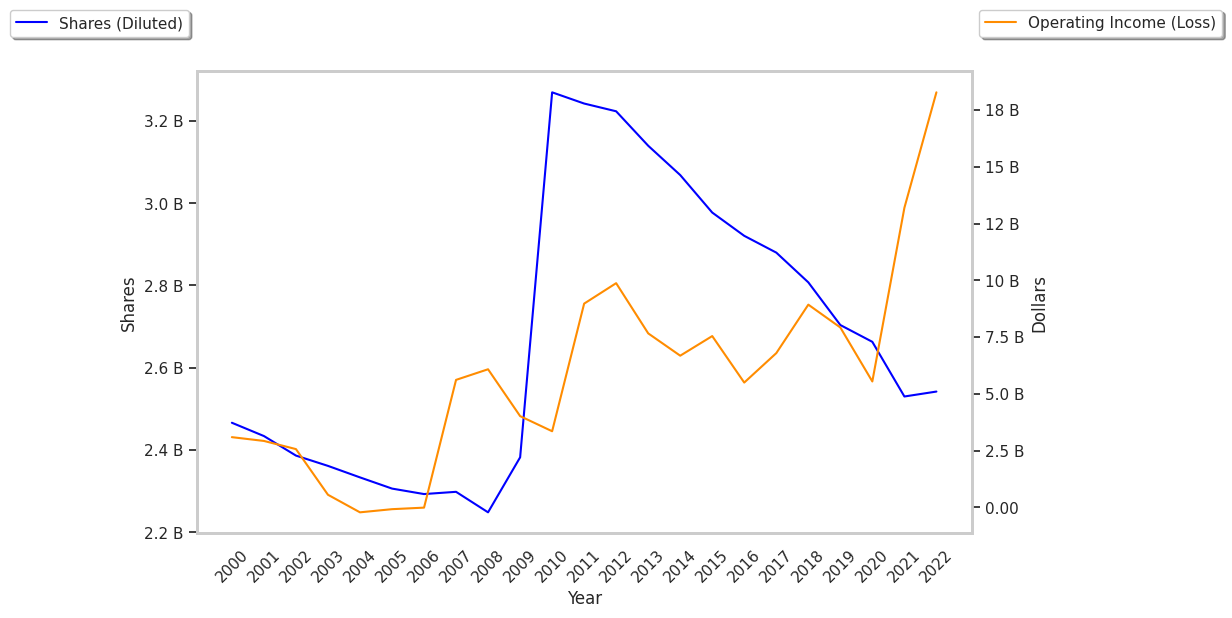Pharmaceutical company Merck & is standing out today, surging to $96.84 and marking a 4.3% change. In comparison the S&P 500 moved only -1.0%. MRK is -5.49% below its average analyst target price of $102.46, which implies there is more upside for the stock.
As such, the average analyst rates it at buy. Over the last year, Merck & has underperfomed the S&P 500 by 16.6%, moving -3.8%.
Merck & Co., Inc. operates as a healthcare company worldwide. The company is part of the healthcare sector. Healthcare companies work in incredibly complex markets, and their valuations can change in an instant based on a denied drug approval, a research and development breakthrough at a competitor, or a new government regulation. In the longer term, healthcare companies are affected by factors as varied as demographics and epidemiology. Investors who want to understand the healthcare market should be prepared for deep dives into a wide range of topics.
Merck &'s trailing 12 month P/E ratio is 12.8, based on its trailing EPS of $7.56. The company has a forward P/E ratio of 10.6 according to its forward EPS of $9.4 -- which is an estimate of what its earnings will look like in the next quarter.
As of the third quarter of 2024, the average Price to Earnings (P/E) ratio for US health care companies is 22.94, and the S&P 500 has an average of 29.3. The P/E ratio consists in the stock's share price divided by its earnings per share (EPS), representing how much investors are willing to spend for each dollar of the company's earnings. Earnings are the company's revenues minus the cost of goods sold, overhead, and taxes.
Merck &'s financial viability can also be assessed through a review of its free cash flow trends. Free cash flow refers to the company's operating cash flows minus its capital expenditures, which are expenses related to the maintenance of fixed assets such as land, infrastructure, and equipment. Over the last four years, the trends have been as follows:
| Date Reported | Cash Flow from Operations ($ k) | Capital expenditures ($ k) | Free Cash Flow ($ k) | YoY Growth (%) |
|---|---|---|---|---|
| 2024 | 21,468,000 | 3,372,000 | 18,096,000 | -33.2 |
| 2023 | 13,006,000 | 14,083,000 | 27,089,000 | 84.19 |
| 2022 | 19,095,000 | 4,388,000 | 14,707,000 | 69.55 |
| 2021 | 13,122,000 | 4,448,000 | 8,674,000 | 48.94 |
| 2020 | 10,253,000 | 4,429,000 | 5,824,000 | -42.17 |
| 2019 | 13,440,000 | 3,369,000 | 10,071,000 |
- Average free cash flow: $14.08 Billion
- Average free cash flown growth rate: 12.4 %
- Coefficient of variability (lower numbers indicating more stability): 0.0 %
With its positive cash flow, the company can not only re-invest in its business, it can offer regular returns to its equity investors in the form of dividends. Over the last 12 months, investors in MRK have received an annualized dividend yield of 3.4% on their capital.
Another valuation metric for analyzing a stock is its Price to Book (P/B) Ratio, which consists in its share price divided by its book value per share. The book value refers to the present liquidation value of the company, as if it sold all of its assets and paid off all debts.
Merck &'s P/B ratio indicates that the market value of the company exceeds its book value by a factor of 4, so the company's assets may be overvalued compared to the average P/B ratio of the Health Care sector, which stands at 3.19 as of the third quarter of 2024.
Merck & is by most measures undervalued because it has a Very low P/E ratio, an average P/B ratio, and generally positive cash flows with an upwards trend. The stock has mixed growth prospects because it has a an average PEG ratio and strong operating margins with a positive growth rate. We hope you enjoyed this overview of MRK's fundamentals.



